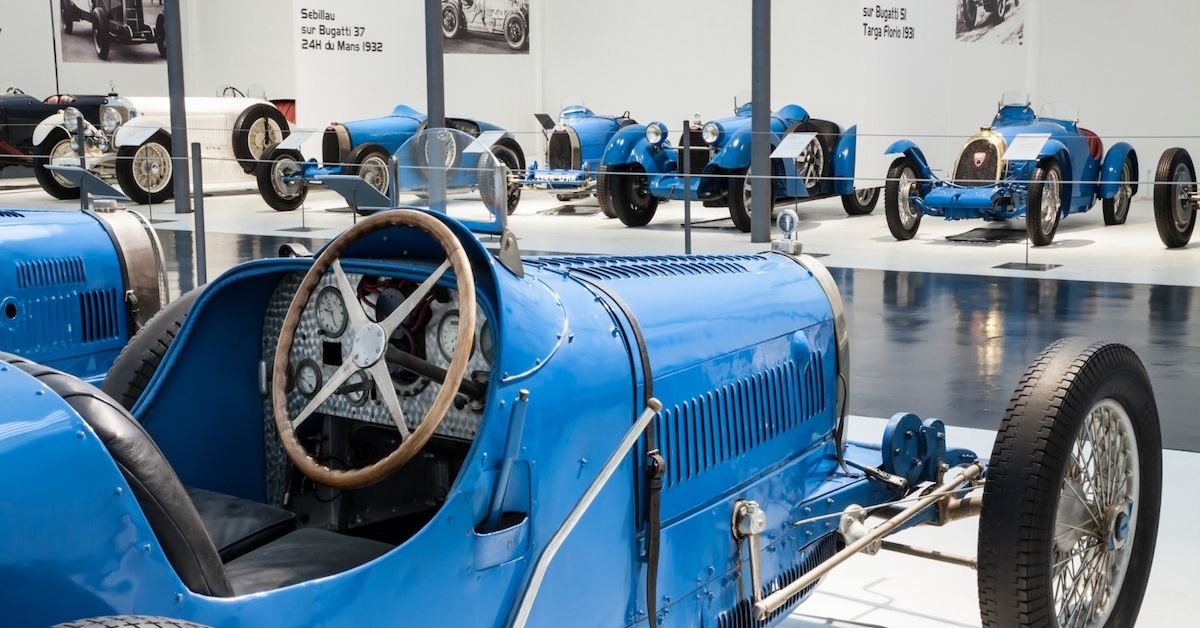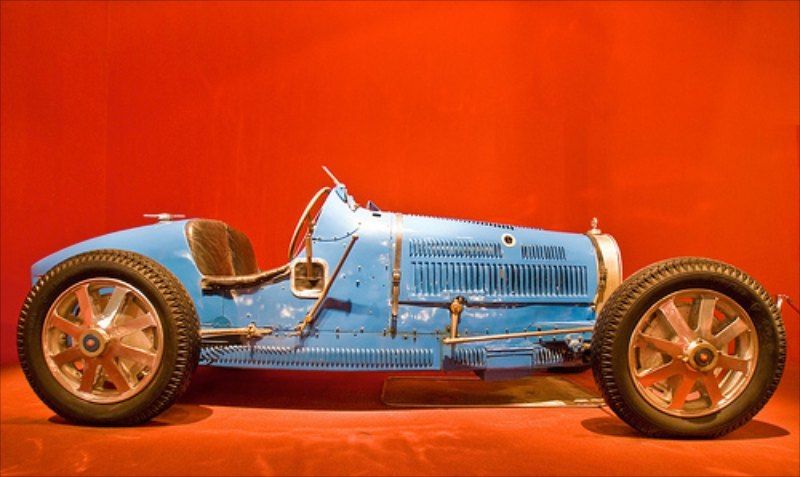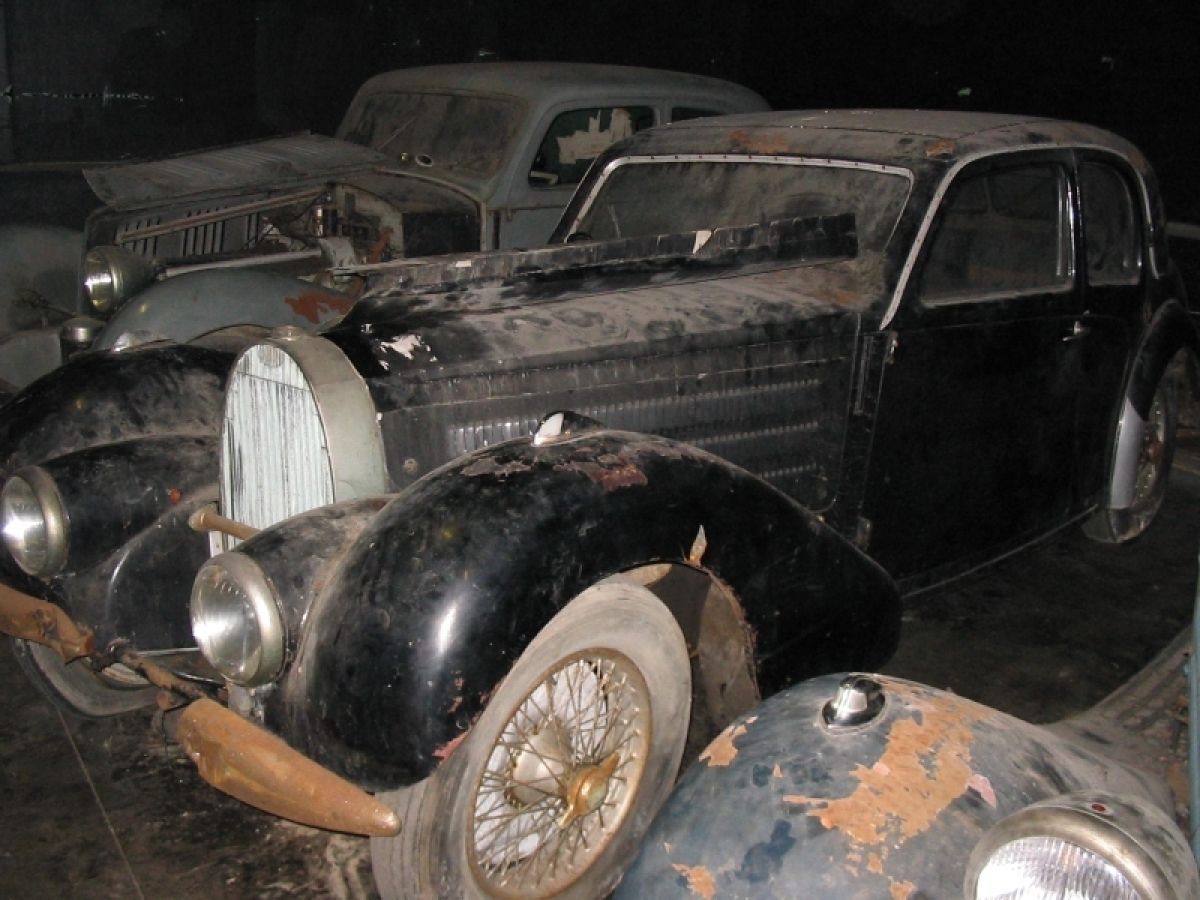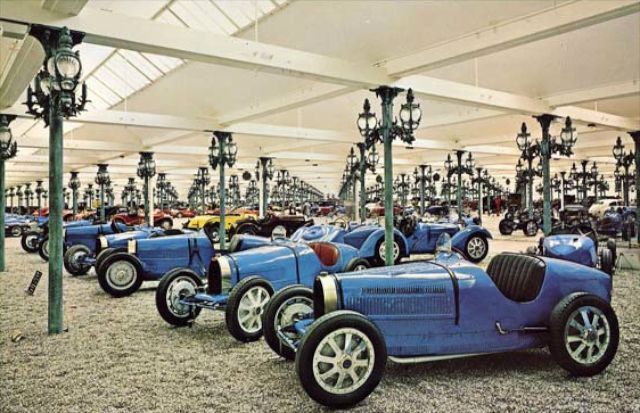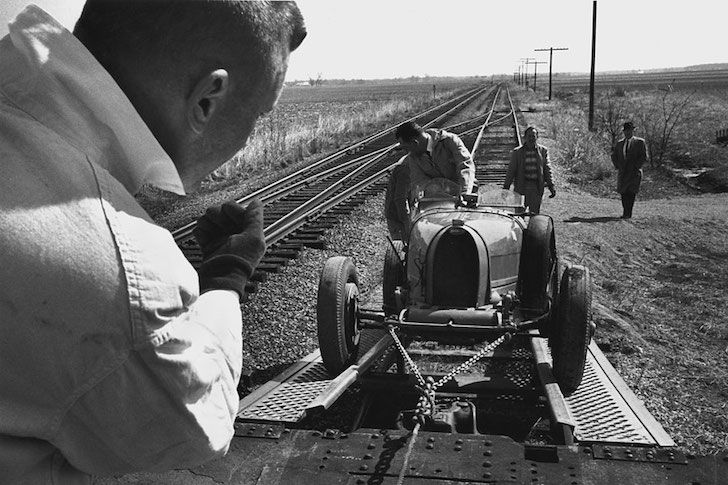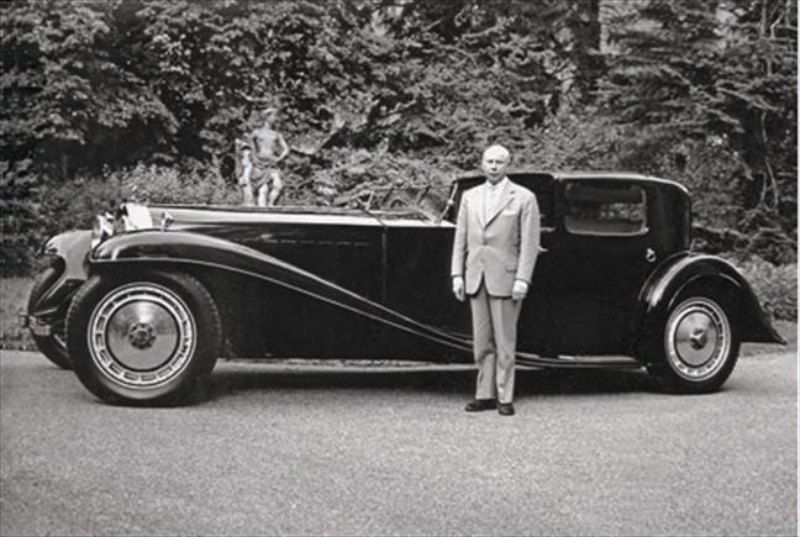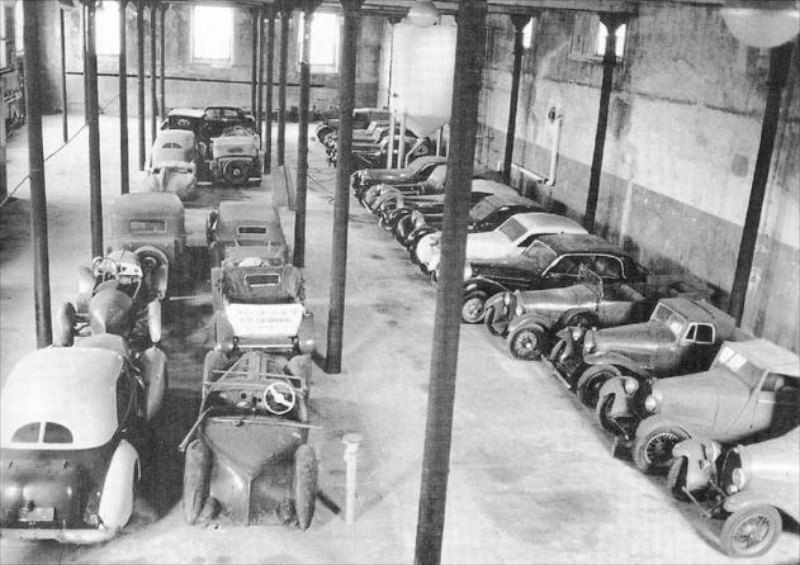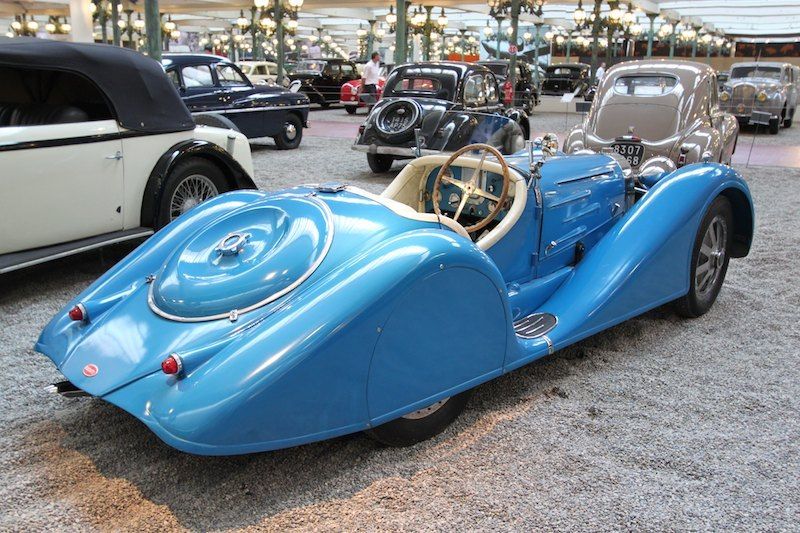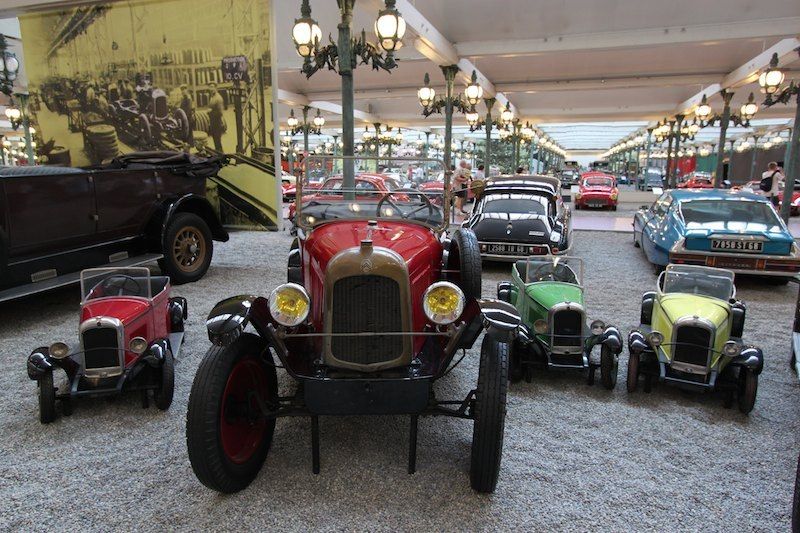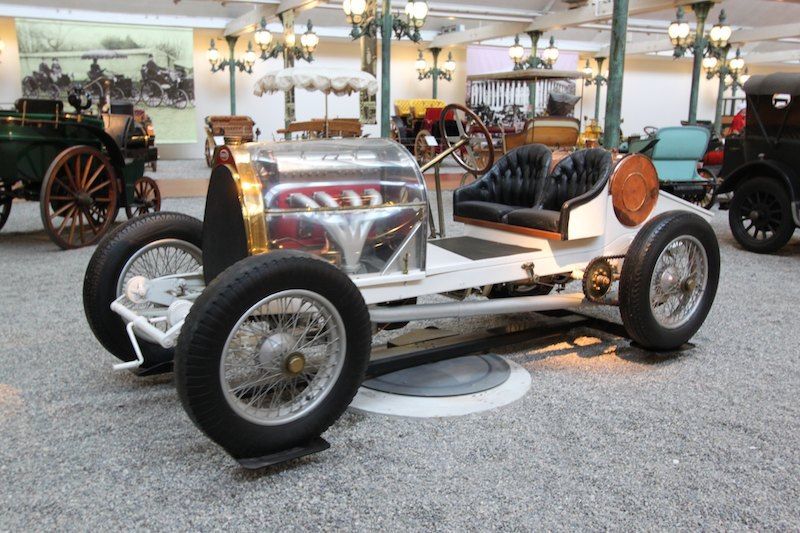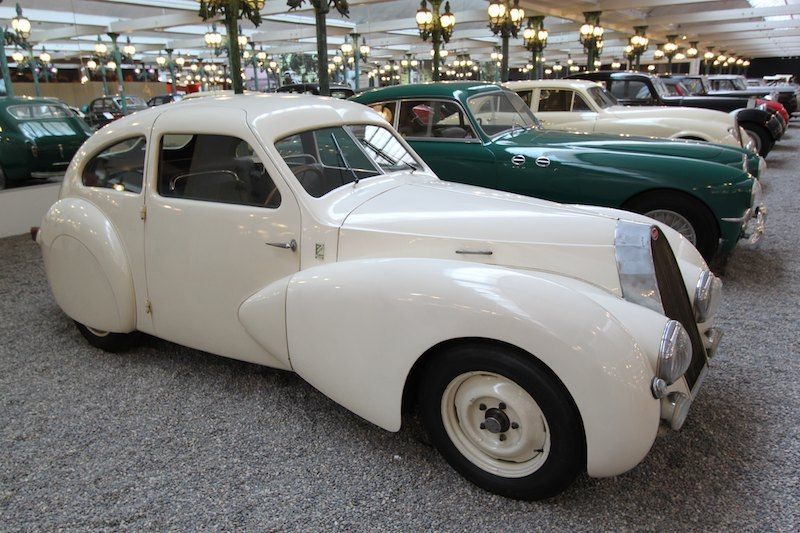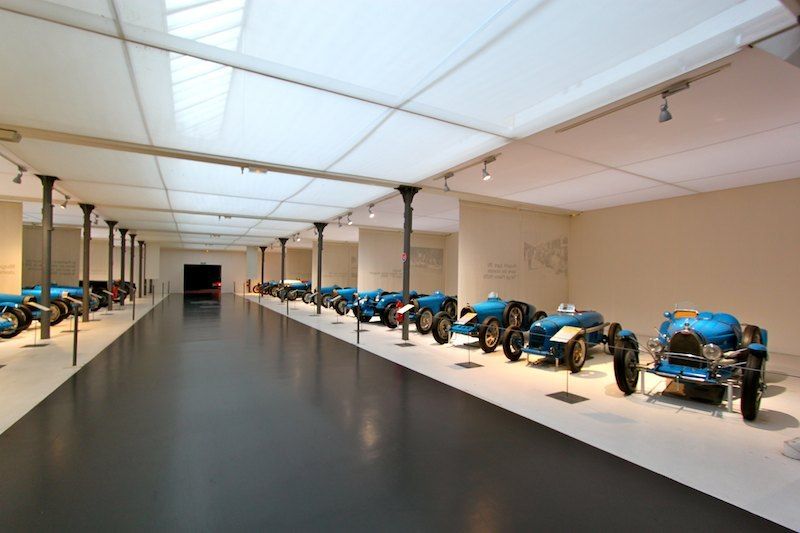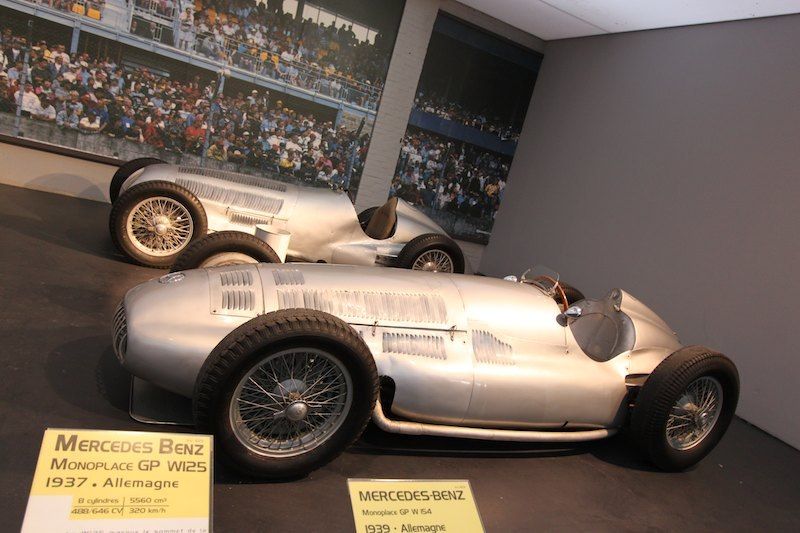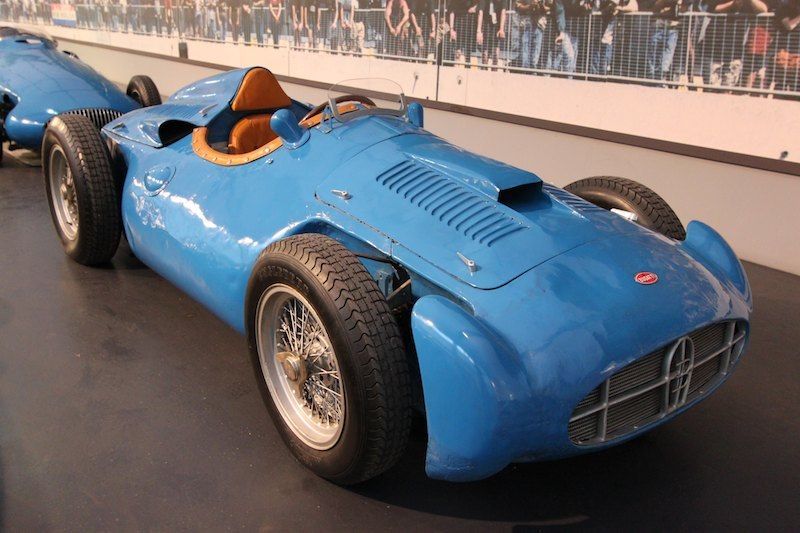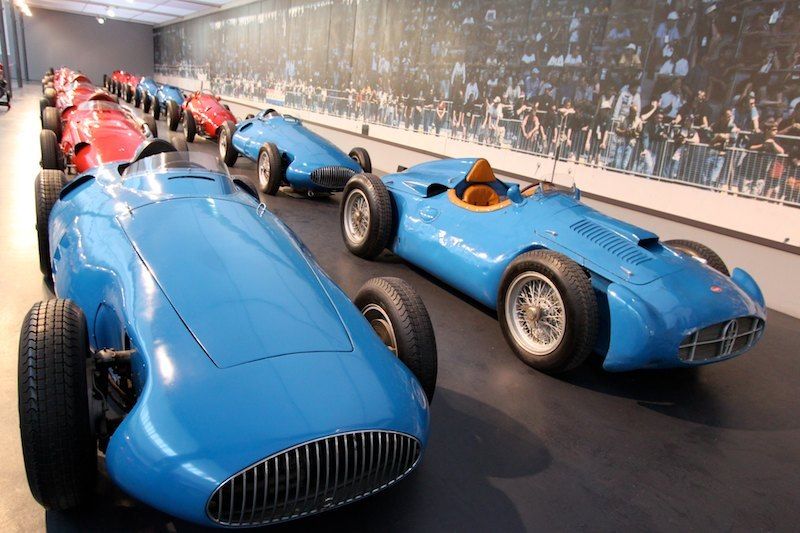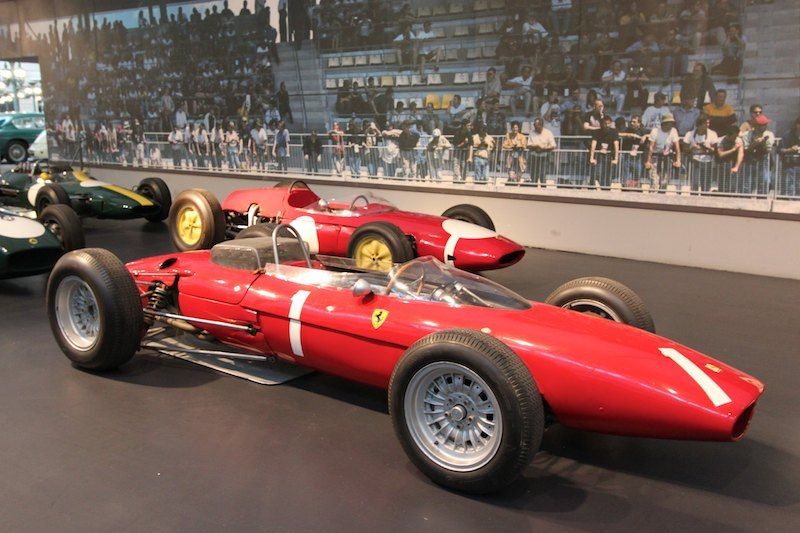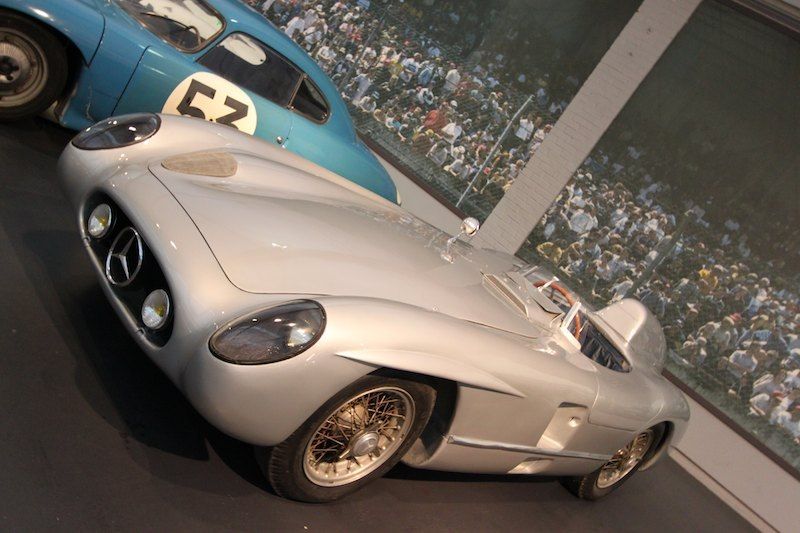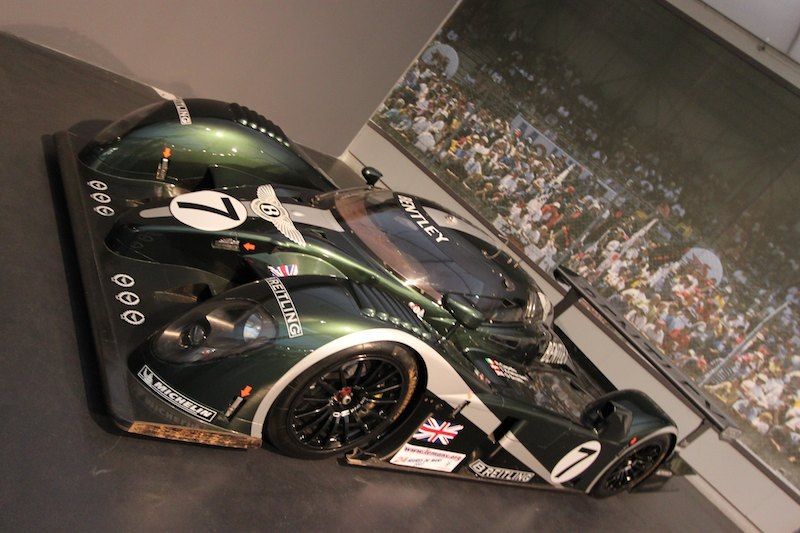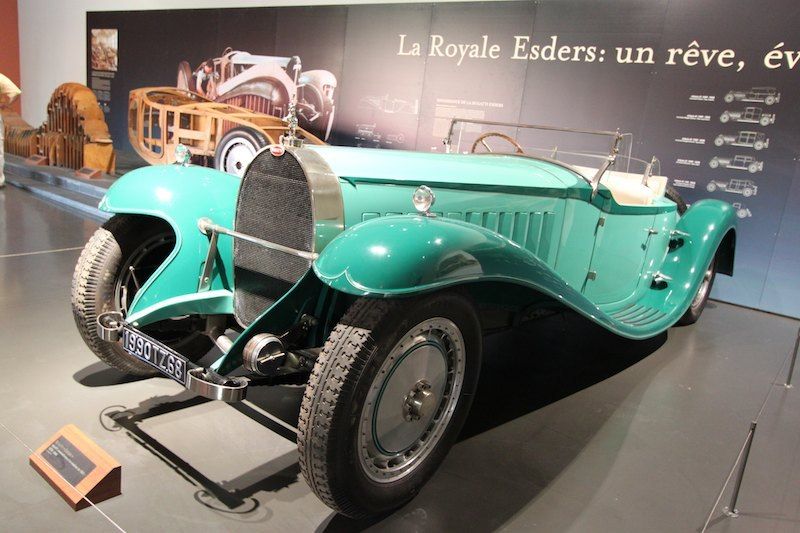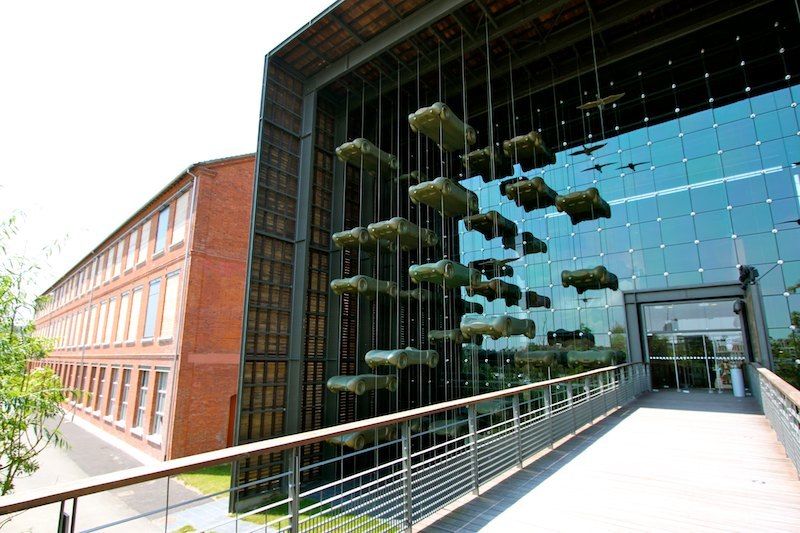The Schlumpf Collection in Mulhouse, France, is often described as the most prestigious automobile collection in the world. One thing's for sure, no other car collection has a history more filled with intrigue.
Coming from a reasonably ordinary background, Fritz and Hans Schlumpf—a salesman and a banker respectively—earned their fortune in woolen mills in the French Alsace region.
The Schlumpfs’ relationship with their workers certainly started off on the right foot. Housing, transportation and other benefits were available to loyal employees. Over time though, the character of the relationship turned sour, especially so under control of former banker Hans Schlumpf. Plus, there was the unwelcome intrusion of trade unions following the war on top of it all. The Communist trade union, CGT, claimed to be looking out for the welfare of French workers, but at the same time, they forced the Schlumpf brothers to look out for themselves.
The public first learned of the Schlumpf brothers' collection in 1977 when striking workers broke in and seized the collection. Famous automotive journalist Denis Jenkinson—who rode with Sir Stirling Moss in his famous 1955 Mille Miglia victory for Mercedes—first documented the secret collection, writing with Peter Verstappen and assisted by noted Bugatti historian Hugh Conway who expressed his dismay at ever becoming involved with the Schlumpf brothers and their obsession with dominating the world market for Bugattis.
By then the Schlumpfs had fled to their native Switzerland and would never again see the collection that had dominated their lives, doomed their business empire and sent them into permanent exile.
25 A Racing Career Ends And A Collection Begins
Fritz purchased a Bugatti Type 35B Grand Prix car just before the war and added a Type 57 shortly after the war. He enjoyed sports car racing until 1957 when the textile union asked his mother, who had an unusually strong influence on her sons, to see that he'd stop this dangerous activity so their jobs wouldn't go up in flames in case he had an accident.
Deprived of racing as an outlet for his automotive passion, Fritz and Hans would turn to car collecting. The summer of 1960 they went on a buying spree and purchased 40 cars by the end of summer.
24 Well-Kept Secret
Even after converting a mill into a massive showroom for their cars, few other than the brothers and workmen were allowed to view the collection. Even esteemed editor and publisher L. Scott Bailey of Automobile Quarterly was told that it wasn't possible. Surely, this must be the most secret museum in history?!
One notable exception was a private invitation in May of 1965 to a guest list that included, among others, Prince Bertil of Sweden, Prince Louis Napolean, Prince Metternich, Juan Manuel Fangio, Pininfarina and Louis Chiron.
23 Only The Best Would Do
With time, opening the museum became an obsession with the Schlumpfs. Fritz often spoke of it and announced that "The museum will be in memory of my mother."
For decades, the acquisition and restoration of automobiles and work on the museum continued. The brothers even bought the best hotel in Mulhouse, the Hotel du Parc, to host expected museum visitors, who would be served free champagne.
800 gas-style lamps modeled after the elegant lamps lining the Pont Alexandre III bridge in Paris were installed. This extravagance was a characteristic of both the best and the worst of the Schlumpfs’ obsession.
22 Workers Strike
It wasn't just the brothers who were obsessed with the museum, it had also become an obsession with the union. Workers were constantly sent to it from union-defined duties, and various items, such as tools, concrete, and wood were diverted to Mulhouse. During the general strike of 1968 the Union had a list of complaints relating directly to the museum. The brothers ignored it.
Another workers strike in 1971 led to confrontations taking place at both the mills and the estate in Malmerspach. An awkward agreement was reached, but the brothers refused to deal directly with their workers any longer.
21 Going Broke
Affairs went from bad to worse, hastened by inexpensive textile imports from the Far East that undermined French mills in spite of government support. In June 1976, the Schlumpfs placed their mills in receivership. This was followed within months by criminal warrants issued for both brothers’ arrests on charges of embezzlement.
The French government refused further subsidies and ordered all Schlumpf assets, including the museum, to be seized, thus depriving the brothers of all their possessions. In 1978, the government ordered the Schumpf collection put on the historical register and sold to the National Museum.
20 Exile
The Schlumpf brothers are held in their villa located in Malmerspach next to the production site. Not only do the union activists from their factories become threatening, but even outsiders are starting to get involved.
After three days, at the French authorities instigation, the brothers are brought to the Swiss border, and will eventually take up official residence in Basel. The factory is occupied and the entire world eventually discovers and admires a prestigious collection. Through envy, some people claim that the collection could only exist due to detriment of the industrial activity of the Schlumpf companies, which is inaccurate. Others realize the benefits it could generate for Mulhouse and the Alsace region.
19 Hidden Treasure
Readers of both automotive publications and regular newspapers were astonished by accounts of what the intruders found when breaking into the mill.
It took the workers several hours to count the cars that were spread over the equivalent of more than three football fields. They had counted 427 cars, most of them in showroom condition, and the majority in great working order. They didn't know they were only looking at the completed museum—another 150 cars were stashed away in the workshops.
Buses now began to arrive, carrying workers from other Schlumpf factories to see what was declared to be the Workers’ Museum.
18 The Collection Today
Nothing can quite prepare you for a visit to The Schlumpf Collection at the National Automobile Museum in Mulhouse. There are 400 cars on exhibit and another 120 on reserve. A further 20 cars are on loan to other museums around the world.
The cars are arranged in rows on gravel pads, with each row roughly representing a different age of the automobile, from the earliest horseless carriages through European cars of the '50s and '60s. Sadly, the museum director admits that only a small number of the cars on display are actually running now.
17 French Babies
French cars have a special place in the collection. Early Renaults are lined up and identified by their distinctive sloped hoods and cowl-mounted radiators. Other unusual cars include the Baby Bugatti that later went into production as the Bebe Peugeot, with little other than the distinctive horseshoe radiator changed.
There's a Peugeot Type 161 Torpedo with tandem seating for two. The popular Citroen Type C Torpedo from the 1920s - a small car designed to appeal to women - is also well represented. Several incredibly detailed children's versions of the Type C stand nearby, making it look like a family of cars.
16 Remarkable Rarities
Some significant cars include the 40 hp Hermes-Simplex from 1904—one of the earliest designs young Ettore Buggati contributed to. It's remarkably similar to the Bugatti "Garros Type" exhibited nearby with a clear hood displaying one of the first Bugatti engines.
Named after Spain's King Alfonso, there's also a 1912 Hispano-Suiza "Alfonso." There's a Mercedes-Benz SSK designed by Dr. Ferdinand Porsche, when he was Technical Director at Mercedes, a rear engine Mercedes-Benz 170H also designed by Dr. Porsche and presaging the later Volkswagen Beetle. An S.S. 1 Saloon showing lines that later became familiar as the first Jaguars. And a unique Alfa Romeo 8C 2900 from the 1936 Mille Miglia.
15 Post-War Bugattis
Bugatti's inglorious post-war history is represented too. Ettore Bugatti never returned to Molsheim from his Paris exile. The estate was lost during WWII and Ettore Bugatti passed away in Paris a month short of his 66th birthday. A single, white Type 73 coupe in the museum is the remarkable last design drawn by Ettore Bugatti.
Roland Bugatti attempted to revive Bugatti in 1951, aided by Marco Pierre who was loyal to Ettore Bugatti and Molsheim. They created the Bugatti Type 101, considered the last ‘true’ Bugatti. Eight Type 101s were built, several of which are included in the museum in different body styles.
14 Racing Passion
Remember how the entire collection began because of Fritz Schlumpf's passion for racing? Of course, there are plenty of race cars in the collection.
The Bugatti Grand Prix cars, as well as other significant competition cars, were once displayed throughout the museum; but today, they're housed in a separate display wing appropriately titled La Course Automobile.
Stepping through the archway to enter this area is like stepping into another world as the racing cars have been given a stark, white environment where each example can be studied and appreciated, whereas the other display areas have more natural light.
13 Silver Arrow
Walking through the museum, visitors will enter a gallery where a pair of pre-war Mercedes Silver Arrow Grand Prix cars are proudly on display across from an exhibit of Le Mans sports cars on the other side.
In 1938, there were 9 Grand Prix races, and in 1939 there were 8, the incredible Mercedes-Benz W154 won 12 of those 17 events, plus 10 second-place finishes. Four times the three-car team swept the podium. The W154, or Silver Arrow, is one of the greatest race cars the world has ever seen. Of the 16 cars built, only half survived - and two of them are in the Schlumpf collection.
12 Bugatti 251
The small post-war Bugatti organization also attempted a comeback to Grand Prix racing with the Type 251, which forever occupies the first starting position on the museum’s 1950s GP grid. The car was, however, a monumental flop
Built during 1955-1956, the 251 was a radical rear-engine car designed by Gioacchino Columbo—usually associated with Ferrari—and powered by a transversely mounted 2.5-liter DOHC in-line eight-cylinder engine. The Type 251 was entered in a GP only once, driven by Maurice Trintignant at the 1956 French Grand Prix where it retired early in the race.
11 Gordini Type 32
The aforementioned Type 251 is flanked on the 1950s Grand Prix grid by the Gordini Type 32 from 1956. Amédée Gordini was a fiercely nationalistic tuner, whose cars carried the French blue gallantly at Le Mans and in the new Formula One in post-war years. The team was, however, always short of funds.
Gordini was a close friend of Fritz Schlumpf and all of the remaining Gordini racers became part of the Schlumpf Collection when Gordini joined Renault, where he contributed to the development to Renault Sport and Renault’s later F1 success.
10 Lotus & Ferrari Racers
In the newer GP grid, a Lotus 18 and Lotus 25 fill the back row behind a Ferrari driven by John Surtees. At the front of the grid are the newer F1 cars including a Renault and Williams-Renault World Champion.
Racing driver Jo Siffert sold three Lotus racing cars to the Schlumpf brothers for a pittance. There are plenty of Ferrari GP racers in the collection, including a 1970 Type 312 B with a 12-cylinder flat engine producing almost 500 horsepower.
Many of the greatest 1970s drivers sat at the wheel of that car; Jacky Ickx, Ignazio Giunti, Clay Regazzoni, Mario Andretti, and Nicky Lauda.
9 Sports Car Division
On the sports car side of the racing display, the cars are angled into their start positions on the Le Mans pit road. It's just incredible to see all these vintage racers lined up, almost like they're frozen in time.
What may very well represent the greatest collection of Gordini sports cars in the world fills the small-bore end of the grid, which continues past a Mercedes 300 SLR of the type that was leading Le Mans in 1955 before Pierre Levegh’s accident led to the team’s withdrawal from the race.
8 Latter Days Le Mans
At the fastest end of the pits are the more recent Porsches, Audis and Bentleys, as well as a 1978 Renault-Alpine A442B team car with its radical windscreen that seamlessly turned into the roof.
A large portion of this part of the collection has been built after the Schlumpfs had to flee to Switzerland, and the government-run National Automobile Museum took control of the Schlumpf collection, which is quite easy to tell, as many of the cars are made after the mid-1970s. This doesn't make the collection any less impressive, it just shows that it has taken on a life of its own.
7 Upon Departure
Even in departing the museum, visitors are treated to more unexpected surprises. One special exhibit displays the completed Royale Esders Roadster, together with body and fender bucks used to shape the outsized aluminum bodywork.
Another exhibit is devoted to the Bugatti 57 S, beginning and ending with complete automobiles interspersed and explained with major component groups displayed on a series of hardwood plinths.
Passing finally out of the exhibit spaces, visitors once again encounter the extraordinary bird-like mobile of sports cars majestically crossing through the glass front of the modern welcome hall.
6 Open To Everyone
Bugattis are not like other cars. They are the single-minded reflection of Ettore Bugatti's individual vision of sports and racing cars. Fritz Schlumpf's collection can, therefore, be said to be one man's obsession with another man's obsession.
The Cité de l’Automobile, National Museum, Schlumpf Collection is located in the town of Mulhouse, France. These days it's no longer a secret; it's open to the public year round, 7 days a week. From the outside, the big converted textile mill doesn't look like much, but inside it is an automotive enthusiast's version of heaven.

